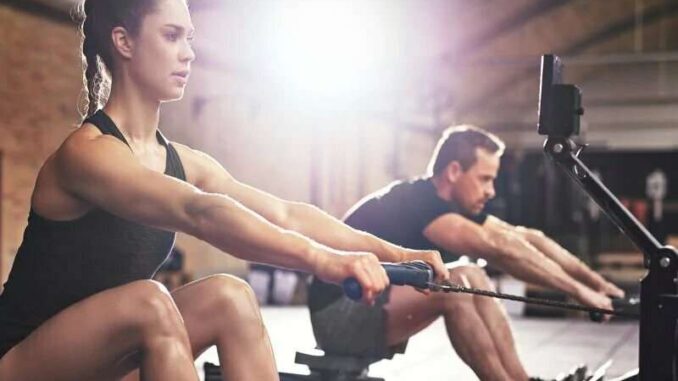
A health game-changer, this system is perfect for weight reduction, toning and strengthening muscles, and growing endurance. Rowers work out many big muscle groups that allow you to improve the upper as well as lower body. Using a rowing machine, most notably, keeps the heart racing and lungs functioning, delivering a significant cardiovascular exercise. Find out our top advantages of having a rowing machine and see if the safest way for you to get physical is with a rower!
Cardio with Low-Impact:
High-impact exercises can hold more risks than benefits for those who are overweight or have chronic joint problems. For anyone that do not do weight-bearing activities, such as driving, cycling, walking, and meditation, a rowing machine is a perfect option. The rowing motion is normal and low in effect, with limited tension on the joints. Rowers, or stationary bikes, are useful for avoiding injuries, and are also an ideal way to stabilize and condition the knees following surgery. While back strain is a problem, you will mitigate the risk by utilizing the correct rowing type. Strong rowing balance helps the legs to do the job, eliminating the strain from the back. For further information on the proper rowing process, check out # 9.
How many calories on a Rowing Machine are burned?
Based on your eating schedule, body weight, and how much you exercise, the amount of calories you burn from rowing is:
- If you weigh around 125 pounds, you can consume about 420 calories per hour of rowing at a reasonable speed. You’ll be eating about 510 calories per hour at an elevated intensity.
Trimming calories for activities with full body:
We also know that weight reduction is a goal in consuming more calories than you eat, but if you can apply 3-5 days a week to a rowing workout without introducing more calories to your diet, you’ll lose weight.
According to Harvard Health, based on your present weight, an average individual may burn between 210 and 311 calories every half hour of moderate stationary rowing; the greater your weight, the more calories you consume, so you get a lift from the outset. By participating in intense rowing, which means traveling quicker or with greater resistance on the rowing machine, you will bring it up to 255 to 377 calories.
The fact that it is a low-impact exercise is one of the strongest arguments to opt for rowing. The temptation to push too heavy on a high-impact workout to lose a ton of calories is one of the main difficulties people encounter in weight loss challenges. You can feel too exhausted and weak after such a workout to manage to work out regularly, or you might experience an injury that needs healing until you can really push yourself again. Low-impact but high-calorie-burning activities such as the rowing machine allow you to continue long-term workouts while achieving big weight loss results.
Best Rowing Moves for Weight Loss:
Often warm up to relax muscles and lift heart rate before beginning any rowing exercise. To row, start your workout slowly for around 5 minutes and before you start. A ‘ladder practice’ is one way to warm up. Here, you row at a certain amount of strokes per minute. Increase the rowing stroke rate per minute and then slow down again when you hit the strokes’ peak every minute.
Power:
The final rowing form of consuming calories is by utilizing power strokes. Complete three sets of short, hard strokes after warming up that blast you backwards; this is also part of strength training. Note how the back muscles often don’t get the workout they deserve, relative to a stationary cycle or any workout machine.
